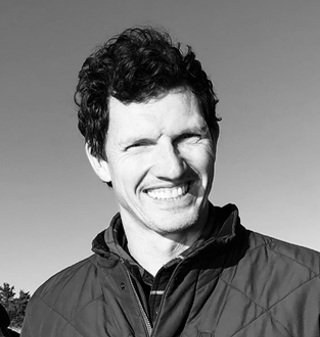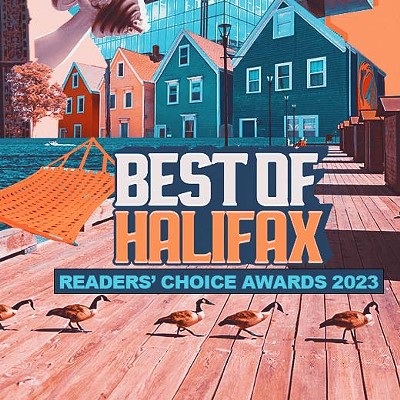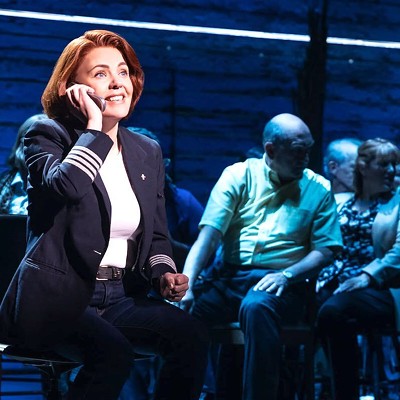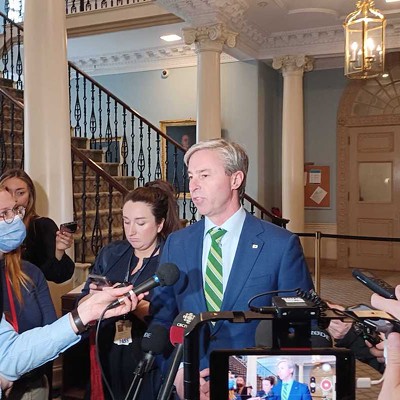A couple weeks ago I wrote a piece called “Seeing green” about Karl-Henrik Robèrt, the Swedish environmentalist who invented The Natural Step planning method. During a visit to Halifax, Dr. Robèrt spoke at city hall on ways to plan today for the most sustainable future. As a local example of how The Natural Step works, I took the craziest pro-car development I could think of—a third bridge—and said, in my best imitation of Robèrt, “Why not envision a future Halifax that has transportation issues solved to the point where there’s almost no wasteful car usage? Maybe the most sustainable city only has one bridge.” It didn’t take long to discover the limits of my imagination. “Why waste your breath,” one of you readers emailed, attaching a link. “The third bridge is happening.”
According to the Wikipedia entry for the Halifax-Dartmouth Bridge Commission: “In July 2006 the commission has already held initial talks with officials of the Halifax Regional Municipality to construct a third bridge or tunnel across Halifax Harbour and expects a formal planning process to begin early in 2007.” The source of that alarming bit of information is a story on CBC’s website called “Halifax bridge group eyes 3rd link,” and that story is just a summary of a Herald article from the summer. I haven’t been able to find the Herald’s original piece, but I got Bridge Commission chair Tom Calkin on the phone. He says reports of an imminent third bridge are “absolutely not correct.”
Calkin says the commission is looking at the city’s growth in the “catchment areas” which the bridges serve, to be mindful of the future. “We are doing population studies so we know what exactly is going on,” he says. “We will not be caught off guard.” But he states, several times, the studies aren’t connected to a third crossing—“crossing” being the term of art that could be bridge, tunnel, cable car or whatever.
Neither the city nor the province has asked for third-crossing plans, and Calkin says the commission is working to make the Macdonald and MacKay bridges run smoothly even as traffic increases. “We will do everything we can to make operation of the bridges more effective in the short and the long term.”
I believe Calkin. Maybe in 10 or 20 years there will be real pressure to build a Halifax-Dartmouth tunnel, but it’s a relief to know that isn’t a priority. I say relief because I figured it was safe to trust Wikipedia. After all, local governments overreact to complaints about traffic, throwing money at drivers’ problems more freely than towards other interest groups (just this week, Halifax council voted $160,000 towards a Regional Parking Strategy Functional Plan.). The bridges at rush hour are choked with cars. Would you put it past the city to go headlong into a new link right now?
Council has agitated for a third bridge before. In 1974, acting mayor Leo Hogan sent a blunt letter to premier Gerald Regan. Bolstered by studies like “Highway Requirements to serve a 500,000 Population” and citizen griping, Hogan demanded a bridge over the Northwest Arm.
“I am writing to inform you that at a recent meeting of City Council the matter of the North West Arm Bridge was again discussed,” Hogan wrote, “and the members of Council expressed their concern about the ever-increasing congestion at the Armdale Rotary and its effect on the residents of the mainland area of the city, especially the Spryfield area.…The matter was resolved in Council by the adoption of a formal resolution which requests your Government to commence immediate construction of an Arm Bridge in order to provide a solution to the chaotic traffic conditions existing at the Armdale Rotary.”
Luckily the Arm bridge, like the Harbour Drive freeway, never happened. All that’s left from that era of planning is the Cogswell Interchange, concrete reminder of the mistake of designing a city around the car.
Send a blunt letter to me. Email: [email protected].





















